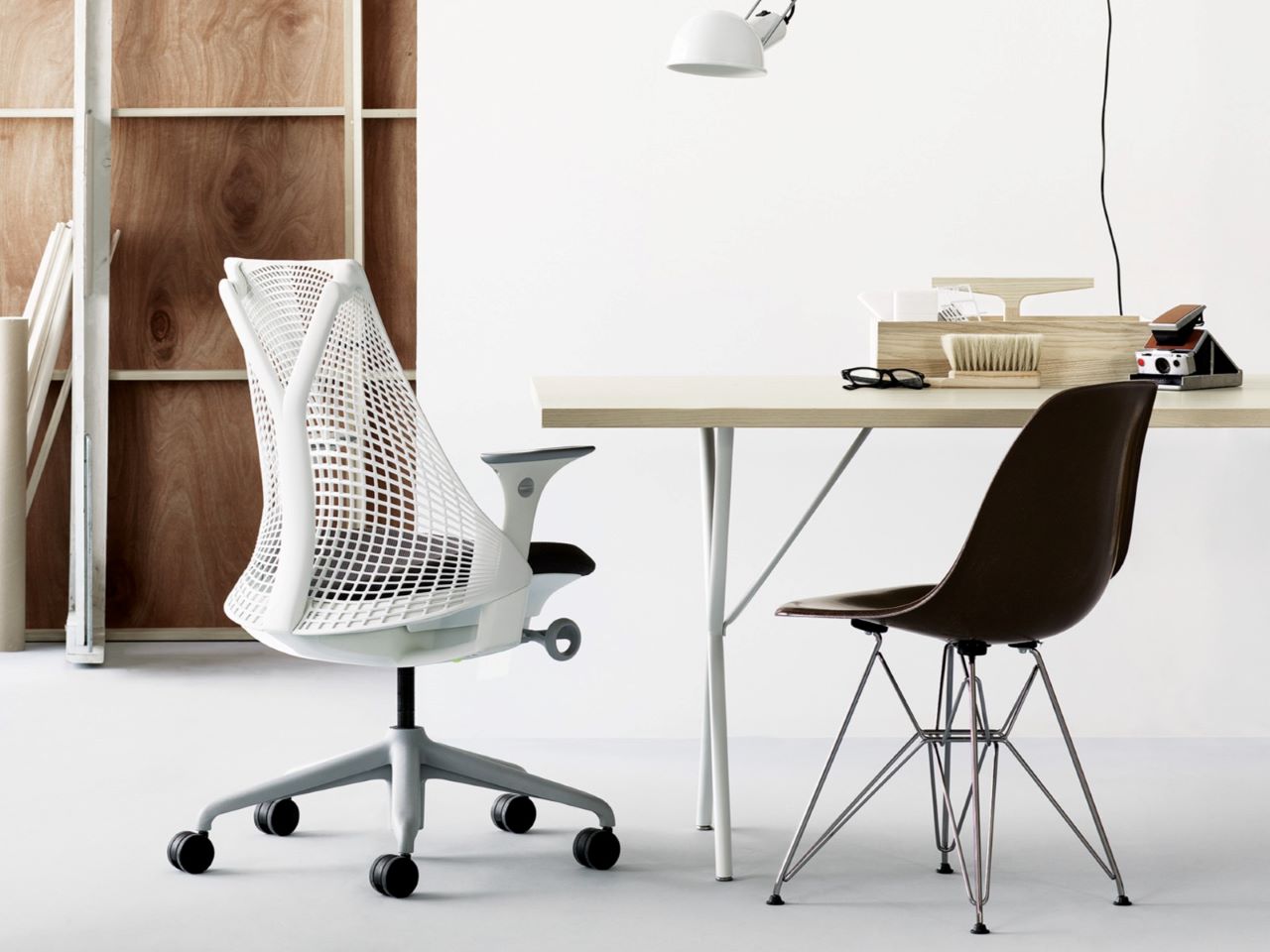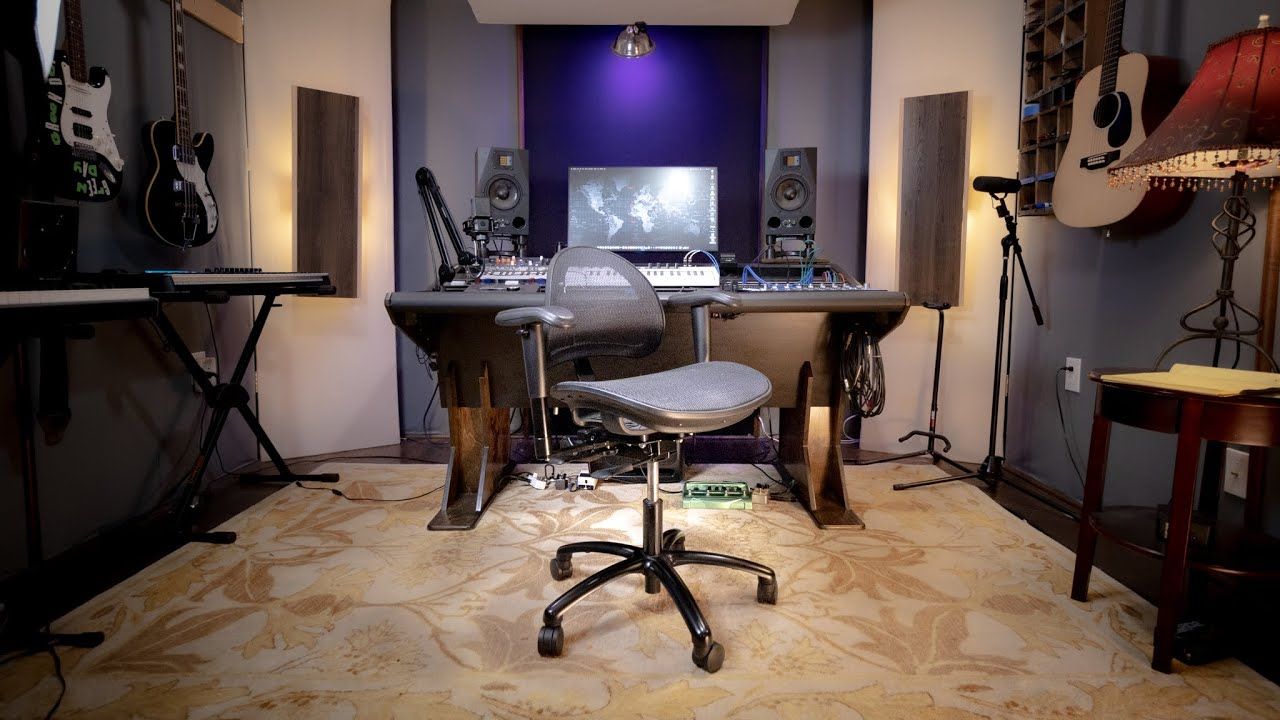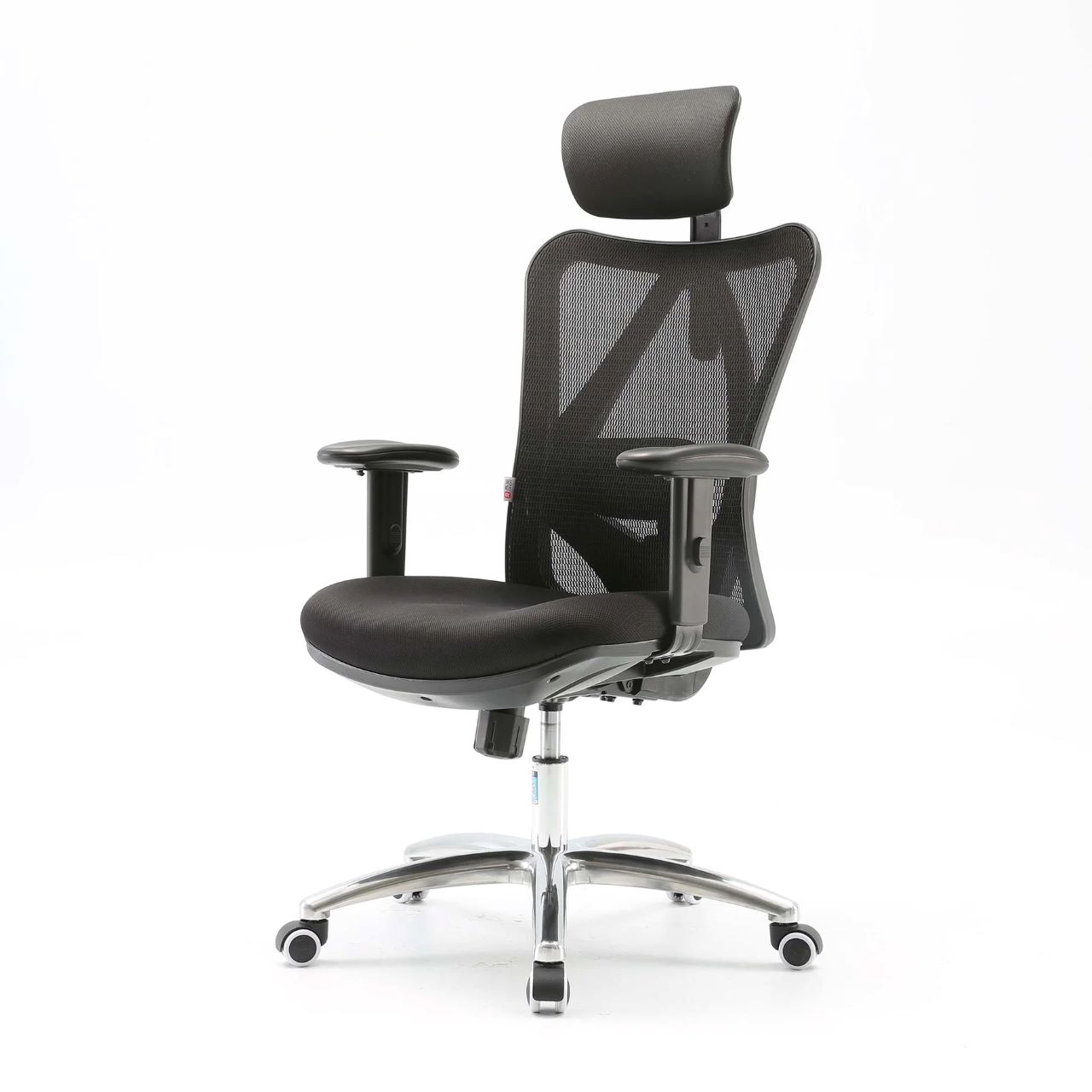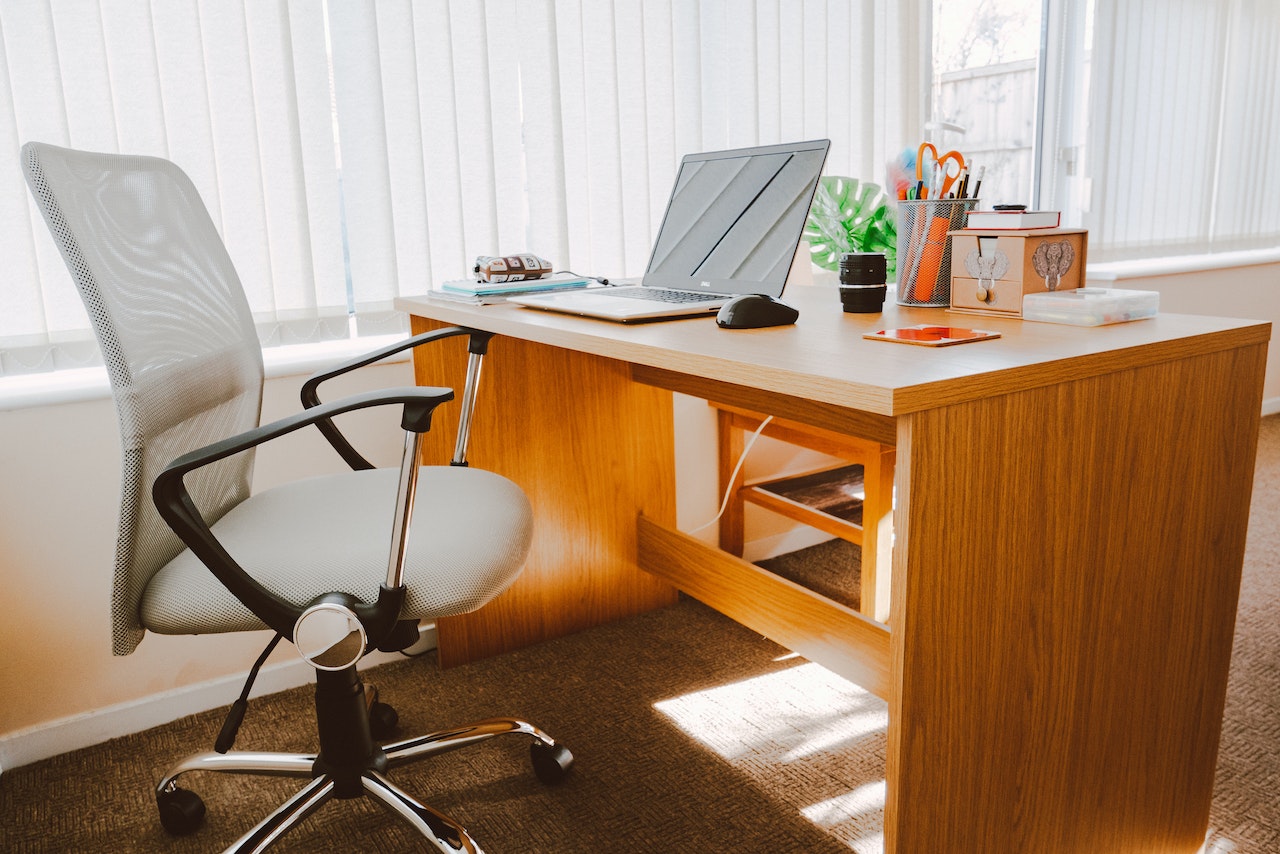Stepping into a podcast recording studio, your eyes are instantly drawn to the dazzling array of tech gear – mixers, microphones, headphones, and state-of-the-art soundboards. It’s a symphony of technology where every piece of equipment sings its importance. Yet, amid this cacophony of devices, a silent hero often goes unnoticed, even though it provides the backbone (quite literally) to the music-making process: the chairs for recording studio.
While the chair may not produce the beats, hold the tunes, or mix the tracks, it does something arguably as crucial: it supports the mastermind behind the magic. A comfortable chair isn’t just a luxury but a necessity, ensuring artists and technicians maintain their focus, health, and creativity during grueling sessions.
This article delves deep into the nuances of selecting the best recording studio chairs, highlighting its underestimated significance and guiding you through making an informed decision.
Related: Podcast Starter Kit
Contents
The Physical Demands of Long Studio Sessions
When in the studio, hours can feel like minutes and before you know it, an entire day has passed. With that comes physical demands that many tend to overlook.
How Does Seating Affect Posture?
Ever caught yourself hunching over after a long day at the desk? Poor seating can lead to bad posture. And when posture suffers, so does your health. It’s more than just back pain. Bad posture can lead to issues like blood flow restriction and even digestive problems.
Impact on Stamina and Productivity
It’s simple: if you’re uncomfortable, you’ll get tired more easily. Stamina directly correlates with productivity. If you’re constantly adjusting in your producer chair or taking breaks to stretch out, your work will inevitably suffer.
The Overlooked Equipment: Why Chairs Matter
You wouldn’t skimp on a good microphone, so why skimp on a quality studio chair? Let’s explore.
- Ergonomics In The Studio: Ergonomics isn’t just a fancy word. It’s about designing your workspace (and everything in it) so you can work comfortably. It’s science and art combined, ensuring your health and efficiency are prioritized.
- A Chair’s Role In A Professional Studio Setting: Chairs do more than offer a place to sit. They support your body through those marathon recording sessions. A good ergonomic studio chair can boost productivity, reduce the risk of health issues, and even enhance the overall studio experience.
Key Features Of A Perfect Recording Studio Chair
When choosing a chair for your studio, here’s what you need to consider:
Adjustable Seat Height
Different tasks require different heights. Being able to adjust the height ensures the chair suits various roles in the studio.
- Importance for Different Studio Desks and Instruments: From mixing desks to keyboard stands, every piece of equipment demands a different height. An adjustable chair ensures optimal positioning for each task.
- Personalization for Multiple Users: Not every person in the studio is the same height. An adjustable chair ensures comfort for everyone, from the tallest to the shortest.
Lumbar Support And Ergonomics
Your back will thank you for this.
- Why Back Support is Crucial: Lumbar support helps maintain the natural curve of the spine, reducing the risk of back pain.
- The Science Behind Ergonomically Designed Chairs: These chairs are designed with human anatomy in mind. They ensure your body is properly aligned and supported, reducing physical strain.
Material And Comfort
A best music studio chairs should feel as good as it looks.
- Benefits of Breathable Fabrics: No one likes that sticky feeling after hours in the studio. Breathable fabrics ensure you remain cool and comfortable.
- Durability and Long-term Comfort: High-quality materials don’t just last longer; they also ensure consistent comfort over the years.
Mobility And Stability
A studio chair should move when you want it to and stay put when you don’t.
- The Need for Easily Maneuverable Chairs: Mobility allows for quick adjustments, especially in a dynamic studio environment.
- Importance of Non-slip Bases: Stability ensures safety, making sure the chair remains grounded, especially during those intense mixing sessions.
Types Of Chairs Suitable For Recording Studios
When we dive into the nuanced world of recording studio essentials, chairs often get sidelined. But, the reality is every recording studio requires specific types of best studio chairs to cater to the unique needs of the artists and technicians. The music and magic might originate from talent and equipment, but a comfortable chair ensures that this talent can work seamlessly for hours on end.
Task Chairs: The Jack Of All Trades
While the name sounds simplistic, task chairs are designed to be highly functional. These chairs usually feature a swivel base, wheels for mobility, and adjustable parts. They’re essential for studios where professionals may need to move around frequently or adjust their seating based on different tasks at hand.
In a dynamic environment like a studio, where one may need to bounce between mixers, computers, and instruments, task chairs provide the needed mobility without compromising on comfort. Their adaptable nature ensures that multiple users can adjust the chair to their liking, making them versatile for different body types.
Executive Chairs: Luxury Meets Functionality
These aren’t just meant for the corner office. Executive chairs bring a sense of luxury to the studio with their plush padding, high backs, and often, leather finishes. They provide a sophisticated touch while offering superior comfort for those marathon recording sessions.
Besides their obvious comfort factor, they’re a statement piece. For studios that often host high-profile clients or wish to give an impression of luxury and professionalism, executive chairs hit the mark. Their ergonomic design also means less fatigue, making them perfect for those who spend extensive hours in the studio.
Drafting Chairs: Perfect For Elevated Desks
If your studio has elevated workspaces, especially ones with large mixers or other equipment, a regular chair just won’t do. Enter: drafting chairs. Taller than the average hbada office task chair, these ensure you’re at the perfect height for elevated desks.
Being higher off the ground might provide a better vantage point for certain equipment. With their footrest rings, these chairs ensure that your feet aren’t left dangling, promoting better posture and circulation.
Related: Podcast Studio Setup
Our Top Picks: Chairs For Recording Studio Use
In the extensive world of chairs tailored for studio use, a handful stands out due to their unparalleled ergonomics, design finesse, and user-friendly features. These chairs promise to transform studio sessions into experiences of sheer comfort, maximizing productivity without compromising health. Here are our top five recommendations that cater to varying studio needs.
Duramont Ergonomic Chair

The breathable mesh back on this ergonomic office chair provides support while keeping your back cool and comfortable. Image Source.
The Duramont Ergonomic Chair is a perfect blend of comfort and functionality. Designed with precision, this chair embodies features tailored to meet the demands of long studio hours. The adjustable lumbar support, which can be moved up or down, ensures your back receives the necessary support irrespective of your body type.
It also offers a unique breathability feature, allowing users to remain cool and comfortable, even during prolonged sittings. With its rollerblade wheels, moving around becomes an effortless task. The chair, being highly customizable in terms of its adjustments, provides a tailored sitting experience, accommodating a wide range of body sizes and weights. This ensures that irrespective of your stature, the chair will offer an optimal comfort level.
Key Features
- Adjustable lumbar support
- Breathable material
- Rollerblade wheels for smooth movement
- Wide range of adjustability options
Pros
- Offers superior comfort
- Customizable to fit individual needs
- Smooth mobility
Cons
- Might be on the pricier side for some budgets
Hbada Ergonomic Chair

The depth of the cushion can be adjusted on the Hbada Ergonomic Chair. Image Source.
Hbada’s Ergonomic Chair exemplifies modern design paired with ergonomic brilliance. This sleek, white chair is not just a visual treat but also a haven of comfort. The chair’s design promotes natural body posture, effectively reducing fatigue during long hours of work. It also boasts a reclining feature, allowing users to lean back and relax during those brief interludes between tasks.
The chair’s mesh back promotes air circulation, ensuring users remain sweat-free and comfortable. The lumbar support, along with the headrest, is strategically placed to provide optimal support to the body’s crucial pressure points, ensuring that those marathon sessions don’t take a toll on your physical well-being.
Key Features
- Modern sleek design
- Reclining feature
- Breathable mesh back
- Lumbar support and adjustable headrest
Pros
- Stylish and functional
- Supports natural posture
- Great breathability
Cons
- Limited color options
Herman Miller Sayl Chair

Sayl’s unframed 3D Intelligent back lets you stretch and move, striking a healthy balance between support and freedom. Image Source.
The Herman Miller Sayl Chair, with its avant-garde design, is more than just a chair—it’s a statement. Known for its outstanding lumbar support, it cradles the user in a way that few other chairs can emulate. The unframed back design not only provides a unique aesthetic appeal but also ensures flexibility, bending to the user’s body contours.
The chair is a testament to Herman Miller’s commitment to sustainability. Its eco-friendly design incorporates fewer parts and less material without compromising on durability or comfort. The intelligent use of materials makes it both lightweight and robust, ensuring it lasts for years, even with rigorous daily use.
Key Features
- Unique unframed back
- Superior lumbar support
- Eco-friendly design
- Lightweight yet sturdy
Pros
- Exceptional back support
- Stylish and innovative design
- Sustainable production
Cons
- Premium price tag
ErgoLab Stealth Studio Chair

The ErgoLab Stealth Studio Chair provides support that promotes proper posture during both resting and working activities. Image Source.
The ErgoLab Stealth Studio Chair is the embodiment of stealth and strength. With its robust build, it’s specifically designed to cater to the demanding environments of recording studios. The chair offers multiple adjustability features, ensuring each user finds their perfect sitting sweet spot. The use of high-quality materials ensures longevity and durability, making it a worthy investment for professionals.
Its aesthetic appeal lies in its simplicity, complemented by features that prioritize user comfort. The thick cushioning ensures that even after hours of use, the chair remains comfortable, ensuring the user remains focused on their work rather than any discomfort.
Key Features
- Robust build
- Multiple adjustability options
- High-quality materials
- Thick cushioning
Pros
- Durable and long-lasting
- Comfortable for extended use
- Simplistic yet professional design
Cons
- Might be bulky for smaller studio spaces
SIHOO M18 High Back Chair

The SIHOO M18 Ergonomic Office has adjustable lumbar support with depth and height. Image Source.
The SIHOO M18 High Back Chair is all about marrying luxury with functionality. With its high back design, it offers unparalleled support to the entire spine, reducing the risk of back pain. The chair’s ergonomic design ensures that the body’s natural curves are well-supported, promoting healthy posture and reducing the risk of musculoskeletal issues.
Crafted with an emphasis on user comfort, the chair boasts breathable materials, ensuring sweat-free sittings. The adjustable armrests and seating height allow users to customize the chair according to their comfort, making it a versatile addition to any recording studio.
Key Features
- High back design for full spinal support
- Ergonomic build
- Breathable materials
- Adjustable armrests and seat height
Pros
- Superior back support
- Promotes healthy posture
- Customizable settings
Cons
- May not fit well in studios with a more traditional aesthetic
How to Choose the Right Chair for Your Studio?
Choosing the perfect chair for your studio is not just about aesthetics. It’s a delicate blend of form and function, with a sprinkle of personal preferences.
Assess The Space: Size And Layout Matters
Before you even begin browsing chair options, get a good understanding of your studio space. Is it expansive, allowing for larger chairs, or is it more compact, demanding sleeker seating options?
It’s not just about fitting the chair into the space but also ensuring there’s enough room to move around freely. A massive chair might seem appealing, but if it makes the studio feel cramped or restricts movement, it’s not the right fit.
Budget: A Delicate Balance Between Cost And Quality
As with most purchases, cost plays a crucial role in the decision-making process. However, it’s vital to understand the value behind what you’re paying for.
While there are budget-friendly options that provide decent comfort, investing in a quality chair can save you from potential health issues and frequent replacements down the line. Consider it a long-term investment in your comfort and health.
Personal Needs: One Size Doesn’t Fit All
Each individual has unique needs. Some might need more lumbar support, while others might prioritize adjustable armrests. Ensure the chair caters to the specific needs of those who use it most often. This could involve adjustable features, material preferences, or even the chair’s height.
Maintenance And Longevity Of Studio Chairs
Like all studio equipment, chairs aren’t a set-it-and-forget-it purchase. They require regular maintenance to ensure they serve you well for years.
Routine Cleaning: More Than Just Aesthetics
While a clean chair adds to the studio’s overall appearance, routine cleaning ensures that the chair’s material retains its integrity over time.
Different chair materials have unique care requirements. For instance, leather chairs might need conditioning to prevent cracking, while fabric chairs could benefit from periodic deep cleaning to remove any embedded dirt.
Wear And Tear: Repair Or Replace?
Over time, even the best chairs will show signs of wear and tear. However, this doesn’t always mean you need a new chair.
Sometimes, it might be more cost-effective to replace a part rather than the entire chair. For instance, if the cushioning is worn out, but the rest of the chair is in good condition, consider just replacing the cushion. On the other hand, if multiple parts are failing, it might be more economical and efficient to invest in a new chair.
Maintaining your studio chair ensures it remains comfortable and functional, aiding in productivity and reducing the risk of health issues. After all, your chair is a silent partner in all your studio endeavors, providing support and comfort as you create magic. Treat it well, and it will serve you well in return.
FAQs
What Kind Of Chair Do Musicians Use?
Musicians, given the diverse nature of their work, often require chairs that cater to both their instrument’s needs and their personal comfort. For example, a drummer might prefer a stool that allows freedom of movement, while a pianist would gravitate towards a bench or an adjustable chair to achieve the right height in relation to the keyboard.
Musicians also lean towards chairs that offer lumbar support, especially during long rehearsals or recording sessions. Mobility, such as swivel features or wheels, is an added bonus for those needing to move around a studio space quickly.
What Is The Best Chair For An Artist?
Artists, much like musicians, have specific requirements based on their medium. For digital artists or those working extensively on graphics tablets, ergonomically designed task chairs or executive chairs, which offer both comfort and mobility, are often preferred.
These chairs ensure that the artist maintains a proper posture, reducing strain on their back and neck during prolonged working periods. For traditional painters or sculptors, drafting chairs can be beneficial, especially if they’re working on larger pieces or require a varied height setting.
What Type Of Chair Should You Use When On A Computer?
For those spending extended periods on a computer, especially in a recording studio setting, ergonomic chairs are the gold standard. These chairs are specifically designed to support the natural curvature of the spine and reduce pressure on the lower back.
Features to look for include adjustable height to ensure feet rest flat on the ground, lumbar support, adjustable armrests, and a swivel base. The chair’s material also plays a role; breathable fabrics can prevent overheating after hours of sitting.
How Often Should You Replace Your Studio Chair?
The longevity of a studio chair depends on its quality, usage, and maintenance. Typically, a well-maintained, high-quality chair can last anywhere from 7 to 10 years. However, it’s crucial to pay attention to signs of wear and tear.
If you notice reduced support, creaking sounds, or visible damage, it might be time to consider a replacement. Remember, while the chair might still “function,” compromised support can lead to health issues over time.
Are There Benefits To Alternating Between Different Types Of Seating In A Studio?
Absolutely! Alternating between different seating options can be beneficial for various reasons. For one, it can reduce the physical strain of sitting in one position for extended periods. For instance, switching between a task chair and a standing desk or a balancing stool can promote better circulation and reduce the risk of musculoskeletal issues. It also offers flexibility in a studio setting, catering to different tasks and requirements throughout the day.
Conclusion: Making The Right Seating Decision For Your Studio
In the realm of recording studios, while cutting-edge technology, acoustics, and instruments reign supreme, the humble chair plays an indispensable role in ensuring seamless production. A carefully chosen studio chair not only enhances comfort and productivity but also complements the aesthetic and functionality of the workspace.
It’s the unsung hero that supports hours of creativity, dedication, and hard work. As you invest in high-quality equipment for your studio, remember that a comfortable, durable, and ergonomic chair is just as crucial. It’s not just about sitting; it’s about creating an environment where talent can thrive uninterrupted.
So, as you set the stage for the next chart-topping track, ensure you’re seated in a chair that does justice to your passion, talent, and dedication.


